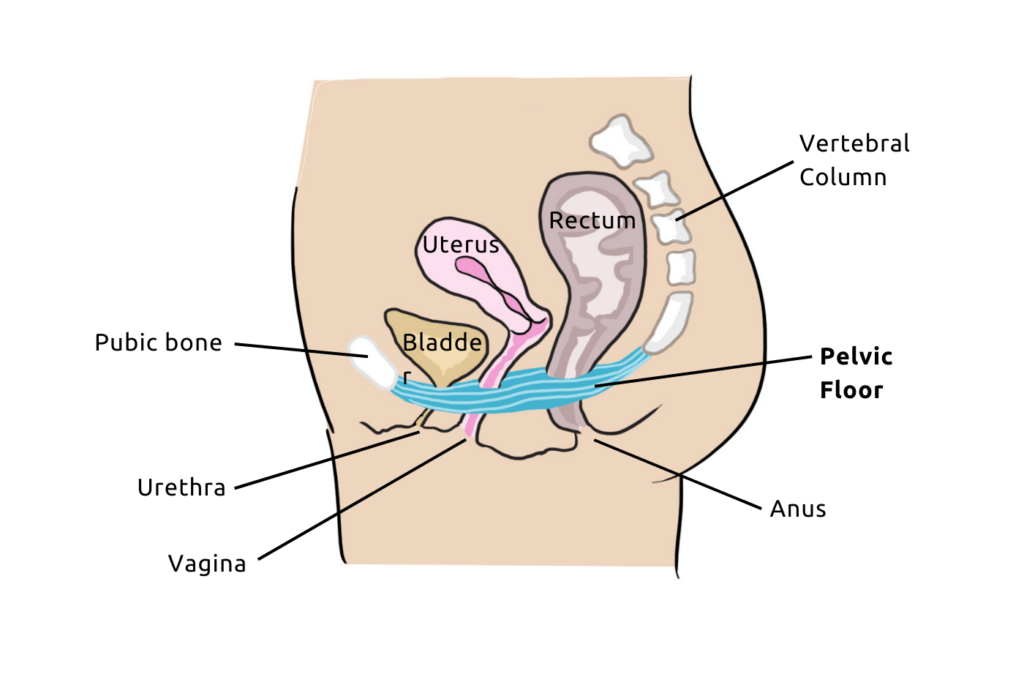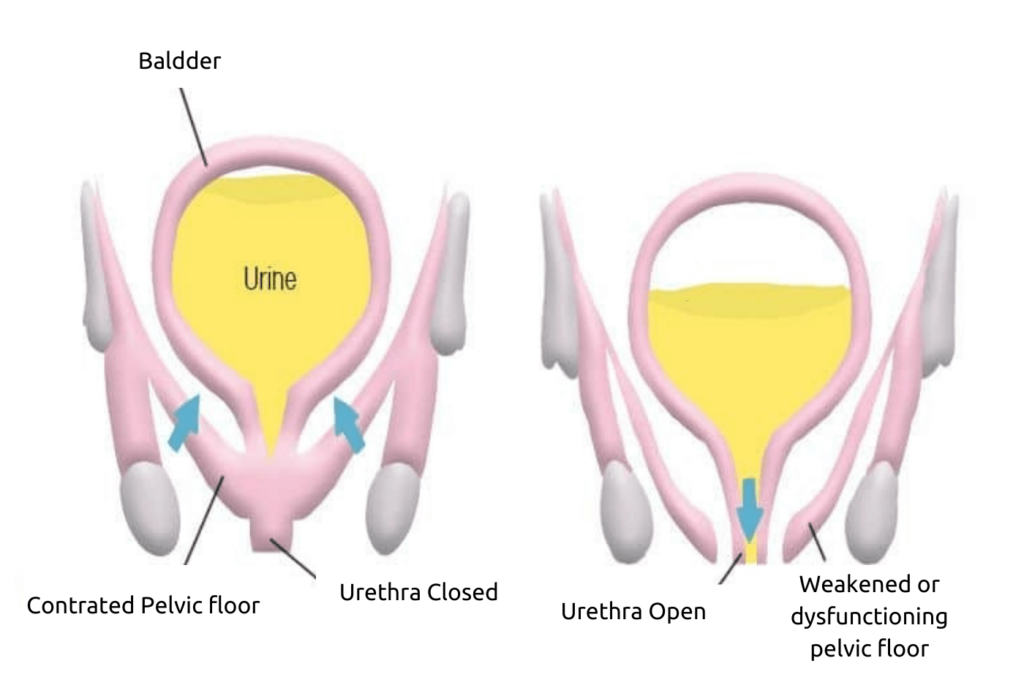
Working out post pregnancy
Whatever the reason for resuming a sports activity, you should think about doing your pelvic floor training before working out post pregnancy. We asked Mathieu, an osteopath in Paris, to tell us more about this topic and give us his advice on working out post pregnancy.
- 1 Working out post pregnancy without pelvic floor training
- 2 Why do pelvic floor training before resuming sports?
- 3 Anatomy of the pelvic floor
- 4 Functioning of the pelvic floor
- 5 What are the consequences of a weak pelvic floor?
- 6 The pelvis as the pivot of mobility
- 7 Successfully resuming workouts post pregnancy with pelvic floor training
Working out post pregnancy without pelvic floor training
If you start working out post pregnancy but without rehabilitating your pelvic floor, certain problems may appear. There are numerous possible pathologies, here are some examples.
- We may experience lower back pain related to the overly forward position of the sacrum, which increases the lumbar curvature.
- Hip pain (gluteus medius tendinitis due to hypermobility of the ilium) may also occur.
- The knee can also become painful (iliotibial band syndrome or patellofemoral syndrome due to weakness of the knee moving inward).
- The feet are not exempt and can also generate pain (plantar fasciitis or flexor hallucis tendinitis due to the collapse of the foot’s inner arch)
In the vast majority of cases, these pathologies are related to a pelvic static disorder inducing muscle weakness.
The weakness of the stabilizing muscles of the pelvis leads to a tendency towards valgus of the lower limbs (feet and knees pointing inwards). Valgus causes significant eccentric stress on the muscles, leading to tendinopathies.
To prevent the onset of these pains, it is essential to do your pelvic floor training before resuming workouts post pregnancy

Free Pelvic floor guide
Find out how to strengthen your pelvic floor to prevent bladder weakness and improve intimate pleasure! 💥
Why do pelvic floor training before resuming sports?
Perineal re-education helps to address and provide solutions to issues identified during the assessment.
Rehabilitation sessions help combat pelvic floorlaxity, or conversely, against hypertonicity and avoid the onset or address pelvic pains.
This re-education is not only for women who have just given birth, but for any woman experiencing discomfort in the perineal area, regardless of age. For this, there are numerous perineal floor training methods.
In all cases, it is highly recommended to do your perineal re-education before resuming sports. Mathieu Lafontaine, a specialized osteopath in Paris, gives us some anatomy reminders to better understand the importance and role of the pelvic floor.
I take care of my pelvic floor
Anatomy of the pelvic floor
The pelvic floor: Has a key support role
The crucial role of the perineum is often rightly mentioned for supporting the pelvic organs (bladder, uterus, rectum) and therefore its action on the sphincters. The postural role of mechanical support of the pelvis is equally essential.
Indeed, the perineum is part of the pelvic floor, extending from the anterior part of the pelvis (the pubis) to the lowest and posterior part of the pelvis (the coccyx).

The role of the pelvis
The pelvis is laterally made up of 2 iliac bones. It includes the pubis in front, articulations with the sacrum behind, and the hip joints on each side. The sacrum is the posterior element of the pelvis articulating superiorly with the spine and inferiorly with the coccyx.
All these elements are interconnected. Consequently, movements of the spine influence the sacrum, iliac bones, coccyx, and vice versa.
Functioning of the pelvic floor
The role of the pelvic floor
The perineum musculature binds the pelvis from front to back. It has two potential roles according to Mathieu. Its contraction allows a closer approach of its two ends:
- A supportive action, stiffening the pelvic floor to maintain and limit the opening of the sphincters of the bladder and rectum.
- A mechanical action called “counter-nutation”, which pulls the coccyx forward. This causes the upper part of the sacrum to move backwards. This in turn increases the opening of the pelvis’ upper strait (the main action when the baby is engaged during childbirth).
What happens when the pelvic floor relaxes?
Relaxing the pelvic floor induces 2 opposite actions

- A relaxing action of the pelvic floor, opening the sphincters of the bladder and rectum.
- A mechanical action known as “nutation”, which relaxes the forward traction of the coccyx. As a result, the upper part of the sacrum moves forward, increasing the opening of the lower strait of the pelvis while decreasing the upper opening (this is the main action during expulsion of the baby in childbirth)
What are the consequences of a weak pelvic floor?
The pelvis plays 2 main roles in human mechanics:
- The specific feature of the pelvis is that it is located at a force crossroad. Gravity on one hand (exerting from top to bottom) and ground support constraints on the other hand (exerting from bottom to top).
- It must constantly adapt to these constraints to fulfill its stability and mobility functions. Therefore, a weak pelvic floor may compromise its abilities, leading to sphincter weakness and the loss of the pelvic stability pivot role.
The pelvis as the pivot of mobility
In order for a movement to occur, there always needs to be a fixed point around which the movement takes place.
The pelvis plays the role of a fixed point around which numerous movements take place. This is why the pelvis is referred to as the pivot of mobility, as many muscles attach to it, enabling walking and movements of the lower limb.
In case of weakness of the pelvic floor leading to the loss of the pelvis’s stability pivot role, these movements are inevitably altered.
In case of a loss of tonicity of the pelvic floor, such as during childbirth, this can promote the development of various pathologies.
Successfully resuming workouts post pregnancy with pelvic floor training
Mathieu gives us one last advice. Before resuming sports, in addition to your perineal rehabilitation, you can have an assessment with an osteopath specializing in the lower limb to evaluate the good mobility and stability of the pelvis.
Above all, do not put pressure on yourself when resuming, take it step by step, listen to your body. Trust it, you will find your rhythm again with a little perseverance and patience. You can start with gentle sports like brisk walking, yoga, swimming…
Beyond performance, the main goal of resuming sports is to regain your sensations, take pleasure in practice and reconnect with your body. You now have all the keys for a successful sports comeback without risking your pelvic floor.

Free Pelvic floor guide
Find out how to strengthen your pelvic floor to prevent bladder weakness and improve intimate pleasure! 💥


